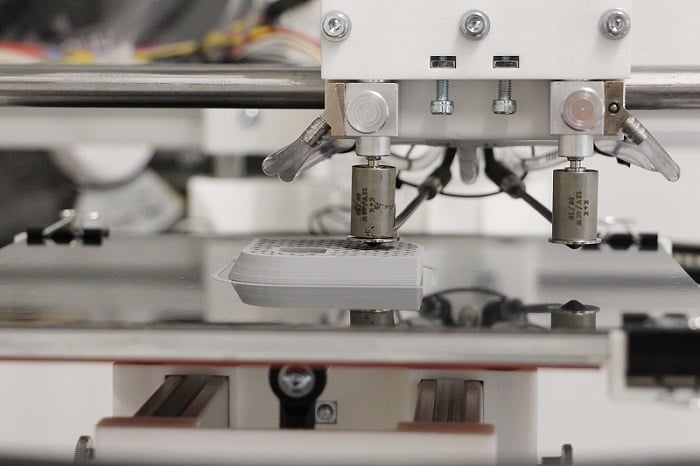Researchers from the Institut für Integrierte Produktion Hannover and Laser Zentrum Hannover have begun work that seeks to enable laser welding of 3D-printed components. The project, titled QualLa (Quality assurance in laser welding of additively manufactured thermoplastic components), aims to develop an expert system that supports small- and medium-size businesses in optimizing additive manufacturing processes so that the printed components may be welded using lasers.
Laser welding is an established joining process for injection-molded plastic components. With 3D-printed components, however, uniformity in internal structure presents problems. Even with components from the same series that appear identical from the outside, internal structure can vary. Due to the cavities and boundary layers created through the printing process, it is difficult to achieve a uniform weld.

In the fused deposition modeling 3D-printing process, plastic components are built up layer by layer. Courtesy of IPH.
The researchers are currently exploring a fused deposition model. In this additive process, thin strands of molten plastic are superimposed layer by layer.
Even before the 3D printing process begins, the expert system that the researchers seek is supposed to provide recommendations on which material, which layer thickness, and which layer orientation are best suited to achieve the highest possible transmission or the highest possible permeability for the laser. With this preliminary work, it will be possible to weld the printed components.
Additionally, the scientists want to develop a method to evaluate transmission with spatial resolution. This involves determining (for an individual component) at which points the laser beam is transmitted, and to what extent. That data will then be used to control the laser transmission welding process with the help of the expert system. If the laser is less transmitted at a certain point, for example, laser power would be increased. If the component is more light-transmissive at another point, a lower power would be used. This adaptive system would enable a uniform weld seam, even if the component itself is not uniform in terms of its transmission.
The team is eyeing machine learning methods to process the information, and, more specifically, neural networks. This will enable the system to learn to recognize correlations between various input variables and the print result independently, and thus predict the expected transmission.
The project is funded by the German Federal Ministry for Economic Affairs and Energy.